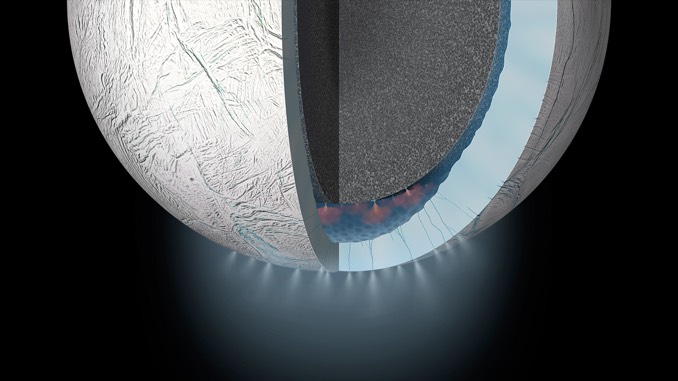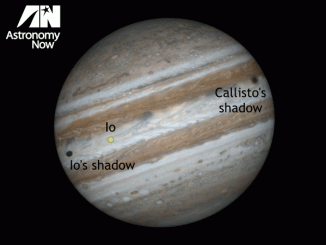
A Southwest Research Institute team developed a new geochemical model that reveals that carbon dioxide (CO2) from within Enceladus, an ocean-harbouring moon of Saturn, may be controlled by chemical reactions at its seafloor. Studying the plume of gases and frozen sea spray released through cracks in the moon’s icy surface suggests an interior more complex than previously thought.
“By understanding the composition of the plume, we can learn about what the ocean is like, how it got to be this way and whether it provides environments where life as we know it could survive,” said SwRI’s Dr. Christopher Glein, lead author of a paper in Geophysical Research Letters outlining the research. “We came up with a new technique for analysing the plume composition to estimate the concentration of dissolved CO2 in the ocean. This enabled modelling to probe deeper interior processes.”
Analysis of mass spectrometry data from NASA’s Cassini spacecraft indicates that the abundance of CO2 is best explained by geochemical reactions between the moon’s rocky core and liquid water from its subsurface ocean. Integrating this information with previous discoveries of silica and molecular hydrogen (H2) points to a more complex, geochemically diverse core.
“Based on our findings, Enceladus appears to demonstrate a massive carbon sequestration experiment,” Glein said. “On Earth, climate scientists are exploring whether a similar process can be utilised to mitigate industrial emissions of CO2. Using two different data sets, we derived CO2 concentration ranges that are intriguingly similar to what would be expected from the dissolution and formation of certain mixtures of silicon- and carbon-bearing minerals at the seafloor.”
Another phenomenon that contributes to this complexity is the likely presence of hydrothermal vents inside Enceladus. At Earth’s ocean floor, hydrothermal vents emit hot, energy-rich, mineral-laden fluids that allow unique ecosystems teeming with unusual creatures to thrive.
“The dynamic interface of a complex core and seawater could potentially create energy sources that might support life,” said SwRI’s Dr. Hunter Waite, principal investigator of Cassini’s Ion Neutral Mass Spectrometer (INMS). “While we have not found evidence of the presence of microbial life in the ocean of Enceladus, the growing evidence for chemical disequilibrium offers a tantalising hint that habitable conditions could exist beneath the moon’s icy crust.”



